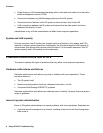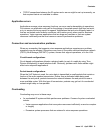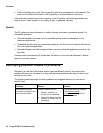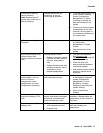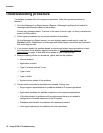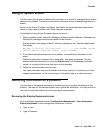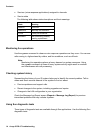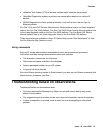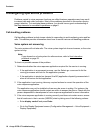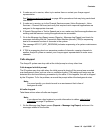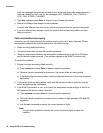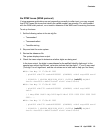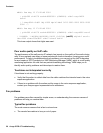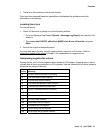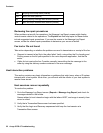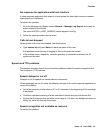
Contents
16 Avaya IR R2.0 Troubleshooting
Investigating operations problems
Problems central to voice response functions can affect business operations and may result
in missed calls and caller frustration. Most of the problems described in this section require
prompt attention. To investigate these problems, you should have a good understanding of
the Requirements for successful operations
on page 6.
Call-handling problems
Call handling problems include issues related to responding to and transferring voice and fax
calls. This section provides information about how to resolve various call-handling problems.
Voice system not answering
The voice system will not take calls. The voice system rings but does not answer, or the voice
system is busy.
Note:
If you depend on a host system for caller services, refer to Host interaction
problems on page 22.
To check on possible causes of the problem:
1. Determine whether the voice response application required for the service is running.
― If the application is a permanent process, use the Solaris ps command to list the
running processes and look for the application process.
― If the application is started on demand, the AD (application dispatch) process starts it
when a call arrives for that application.
2. If the application is not running, take any required actions to correct the operation of the
voice response application.
The application may not be installed or there may be errors in coding. For instance, the
voice response application should contain an action to answer the phone. Check with the
person responsible for development of voice response applications for more information.
3. If the voice response application is running correctly and does not contain errors, ensure
that all cards are in the in service (INSERV) state by taking one of the following actions:
― Enter display card all and press Enter.
― Go to the Display Equipment screen (Configuration Management > Voice Equipment >
Display Equipment).



